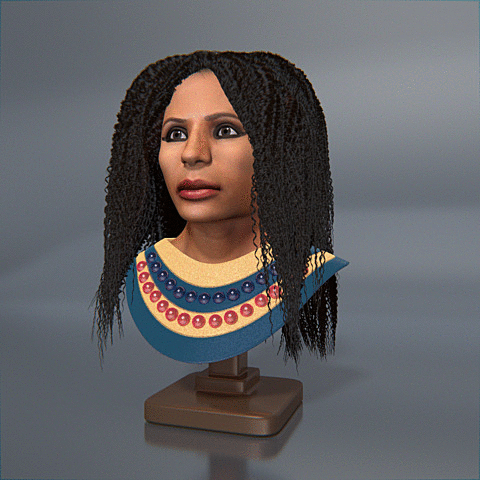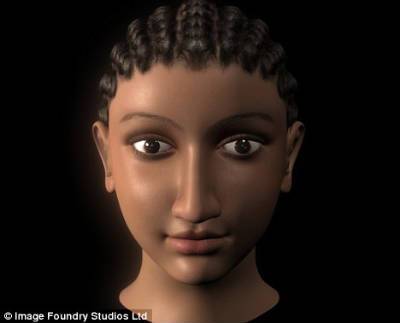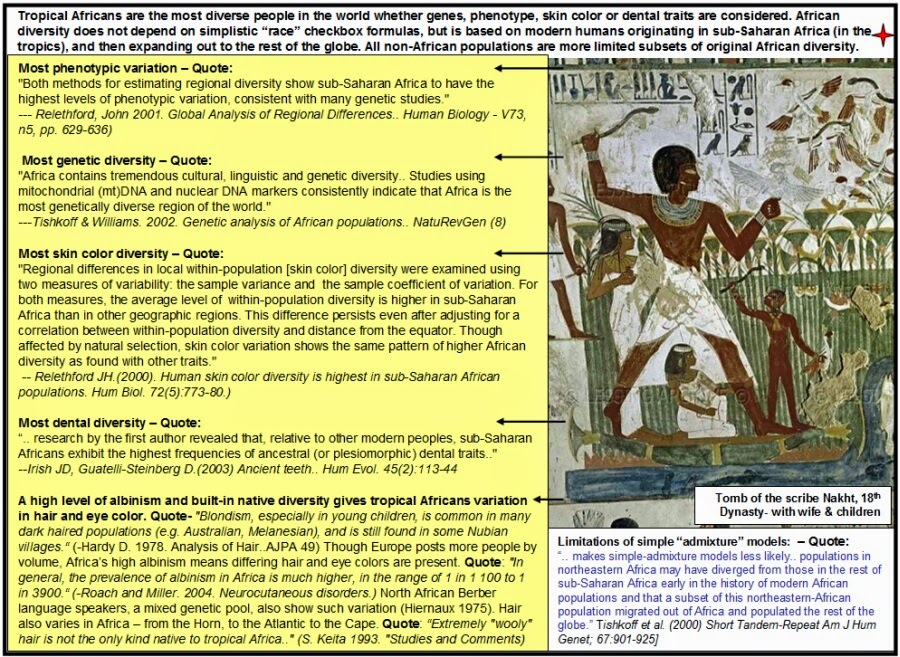|
|
Post by MorolongDithabeng on Jul 10, 2014 15:00:45 GMT -5
Thank you, need I mention the Masai and their love for redo. In almost every Bantu culture there is a hybrid version of prayer for protection, an example of one such prayer commonly taught to children in Southern Africa is as follows: Re phemele ka diphuka, O Jeso reboloke, jaanong re mo bosigong, fa dira di re tlhasela, Morena dithibela, go re relale ka kagiso, Amen" In translation it means: Protect us with your wings/feathers, O Jesus keep us safe, now we have entered into the night, when enemies attack, Lord shield us so that we may rest in peace, Amen. The ancient prayer said: O Isis, protect me from all things evil and red... Read more: egyptsearchreloaded.proboards.com/thread/1686/tutankhamun-3d-recontruct#ixzz3767GhTrPIt is almost unheard of for a Batu shield to be made from game hide, the shield is exclusively made from cow or bull hide.    See the connection between the ostrich feathers, the sun and the bull, and why that particular hide is used as a shield? |
|
|
|
Post by MorolongDithabeng on Jul 10, 2014 15:27:34 GMT -5
|
|
|
|
Post by MorolongDithabeng on Jul 10, 2014 16:14:27 GMT -5
|
|
|
|
Post by MorolongDithabeng on Jul 10, 2014 16:58:39 GMT -5
   Most western European helmets were decorated with horse hair, are helmets with real feathers a modern adaptation? Helmet types from wikipedia: H. Russell Robinson in his book The Armour of Imperial Rome, published in 1975, classified into broad divisions the various forms of helmets that were found. He classified four main types of helmets for heavy infantry (with subcategories named with letters) and 30 different types of cheek guards. Modern reconstruction of a centurion helmet, first century. Notice the embossed eyebrows and the circular brass bosses typical of the Imperial Gallic helmets Montefortino helmet (4th century BC - 1st century AD) Coolus helmet (3rd century BC - at least 79 AD) Imperial Gallic helmet (late 1st century BC - early 2nd century AD) Imperial Italic helmet (late 1st BC - early 3rd century AD) Ridge helmet, first depicted on coins of 4th-century AD emperor Constantine I |
|
|
|
Post by MorolongDithabeng on Jul 11, 2014 8:52:00 GMT -5
Most western European helmets were decorated with horse hair, are helmets with real feathers a modern adaptation    The 1st shield is a Hippopotamus skin shield apparently from the Sudan and the East African areas, the last 2 from a medieval period. "In the Society for Creative Anachronism (S.C.A.), shields are usually just wood wrapped with rope, much like these wooden rounds from the Thorsberg moors from around the 200s A.D... Zulu shields have always been hides, and east African shields were hippopotamus hide... It might have been a mock-up made during the early nineteenth century when the Ivanhoe craze was going strong..." lostdelights.wordpress.com/category/medieval-life/ |
|
|
|
Post by MorolongDithabeng on Jul 11, 2014 9:37:49 GMT -5
   Often called ”Mountain Heathens” by the Islamic “Fulbe”, these tribes are known today as the Kirdi (Northern Tribes). This shield is made out of cowhide. The burls and grooves were believed to ward to deflect the enemies weapons. Documented in “African Shields”: M.A. Zirngibi, page 53, Fig 57. The rectangular markings/grooves on the Zulu battle shield are also believed to aid in deflecting enemy attacks and making a warrior invincible. As I explained the red of the sun in respect of its offensive & defensive natures, the link between the bull-hide and the ostrich feathers, the markings/grooves are based on sacred numbers of the divine design I mentioned earlier. The Sun on hieroglyphs are often depicted with even numbers like 12, 14, 16, 18, 24 or 34 rays to signify the varying qualities. This corresponds vaguely with even numbered 8 and 16 lotus petals of the Sri Yantra. Once again, understand the connection. 17 rays refer to the Lion and even today the number 17 in African mythology refers to the Lion. Odd numbered rays like these reveal hidden qualities of the individuals depicted. Isn't by numbers that we tell time? Isn't by numbers that we can tell the movement of the Sun? There's nothing new under the sun, the disk is one and it is put on repeat ![]() ![]() |
|
|
|
Post by MorolongDithabeng on Jul 13, 2014 14:16:11 GMT -5
It is almost unheard of for a Batu shield to be made from game hide, the shield is exclusively made from cow or bull hide. See the connection between the ostrich feathers, the sun and the bull, and why that particular hide is used as a shield?    Above is the coat of arms for the North West Province of South Africa, at its helm is the symbol of Apis bull of the sun resting between the horns. Apis "is the calf of a cow which is never able after, to have another. The Egyptians believe that a flash of lightning strikes the cow from heaven, and thus causes her to conceive the Apis. It has distinctive marks. It is black, with a white diamond on its forehead, the image of an eagle on its back, two white hairs on its tail and a scarab-beetle mark under its tongue". The Apis bulls (along with the Mnevis bull and the Buchis bull) were considered to be the earthly incarnation of a god - but unlike other animals who could only intercede with deities on behalf of humans, the Apis Bull was believed to be the very god himself living amongst the human population. Apis was the manifestation of Osiris, Mnevis of Re-Atum and Buchis of Re, all three were chosen for their special markings and were indeed treated as gods on earth Sunflowers turn their faces towards the east at sunrise. Over the course of the day, they move to track the sun from east to west, while at night they return to an eastward orientation.This motion is performed by motor cells in a flexible segment of the stem just below the bud. As the bud stage ends, the stem stiffens and the blooming stage is reached. The stem then freezes, typically in an eastward orientation. Batu people use to bury their dead in a crouching position wrapped with cow hide facing East. |
|
|
|
Post by MorolongDithabeng on Jul 13, 2014 14:48:40 GMT -5
It is almost unheard of for a Batu shield to be made from game hide, the shield is exclusively made from cow or bull hide. See the connection between the ostrich feathers, the sun and the bull, and why that particular hide is used as a shield?    The picture in the middle is the cropped coat of arms NW province South Africa, let us correct the error of the past. Montu was originally a local form of the sun god worshipped in Hermonthis, the capital of the Theban nome. He was said to be the destructive power of the sun. His worship was established in Thebes during the Eleventh Dynasty and he was given the epithet "Lord of Thebes". Thebes was the location of the royal court at that time and so Montu became a powerful state god associated with the pharaoh. Three kings took the throne name "Montuhotep" ("Montu is satisfied"), but the most notable was Montuhotep I who reunited Upper and Lower Egypt after the turmoil of the First Intermediate Period. Montu came to be seen more as a war god than an aspect of the sun. This is the very aspect that characterized the Bantu-Zulu fighting style and formation. The Bantu-Tswana word for 'satisfied' is 'Khotetse' which will result in Montuhotep written as "Motho-khotetse". The Zion Christian Church (ZCC), founded in 1924, is the largest of the African indigenous churches in South Africa. These churches "combine Christianity with some elements of traditional African belief" (Joyce 1989:295). It is customary for Church members to greet each other with the expression ' Khotso' meaning ' Peace' which is derived from the word ' Khotsofala' meaning ' to be satisfied' or ' content'. Among one of their spirited praise songs is the lyrics "KAE KAPA KAE KGOMO REYA LE WENA" which means "wherever you go the Bull, we will follow you". In the past, children were often addressed to as "Bana ba kgomo" meaning "Children of the bull" Kgomo or Khomo in the Sotho-Tswana language means a bull or cow. In ancient Egypt Cow= khm-t compared with today's languages we get In-khomo+ati, In-khomati in Bantu-Seswati, In-komazi in Bantu-Zulu, the ending t is a feminine marker/extension which signifies a female (breasted one). Montu was often depicted as a man with the head of a falcon wearing a headdress of two long plumes, a solar disk and the double uraeus (like that of Amun). He is generally armed, but uses a variety of weapons. Because of his links to the bull cults he was also depicted with the head of a bull (wearing the same headdress) |
|
|
|
Post by zarahan on Jul 16, 2014 11:53:56 GMT -5
Previously back in 2002, London's Science Museum reconstructed Tutankhamen's face of his mummy. The project was called "Tutankhamun: beneath the mask". So they were the first to take on this expedition, but just didn't get the same amount of media coverage and promotion as the 2007 project in America's National Geographics. I most likely believe the contradicting figure of a paler and more Eurocentric Pharaoh was a direct response to London's (earlier) construction of King Tut, for obvious sensitive reason (The academic field will continue to stay racially concerned) Info on the 2002 Project.Online Articles gave their depiction of this 2002 Exhibition. The works of the project with Dr Robin Richards.   Whilst we have the American and French depiction of tut;   Caucasian north African ?? I am no phrenologist but I've never seen a "Caucasian" person's skull shaped like that before, I've only seen Black Africans with that "bean head" shaped skull, so what exactly is this?? How can they identify a Caucasian North African skull shape whilst working blindly in the lab? that's anatomically impossible even for an anthropologist to be that specific. Others; Cleopatra's murdered sister One Scientific depiction of her reconstructed face;  And another  And another;  Now it would be up to us to decide what image of this princess would we admire the most. One thing they'll never admit is that they can't reconstruct the level of melanin in the royal's skin by just reconstructing the remaining mummy specimen and skull. And the eye color..lol I can't be bothered to debate it, it's evident enough. This is all played out to project to the readers and audience what they want to see. A none African influence in Egypt is their priority no matter what. Good info Rivertemz. I have to laugh at the category "Caucasian North African". Given that Africans are the most phenotypically diverse people in the world, and given that deserts themselves promote things like narrow noses one can see the twisted, Eurocentric distortion at work, as if "non Caucasian" North Africans cannot have the same types of features. Their continuing production of such eurocentric propaganda denying and downplaying the diversity and heritage of African peoples no longer gets the easy ride it once did and ensures that new generations of students and scholars confront them in this area for years to come. RECAP for new readers:  |
|
|
|
Post by MorolongDithabeng on Jul 17, 2014 3:01:39 GMT -5
  After almost 2,000 years, the Ancient Egyptian writing, known as Hermetica, continues to be proven accurate. Here are portions of the powerful prophecy, stated in Asclepius III 24-26: Firstly, it talks about the cosmic importance of Egypt (not Greece). "Do you not know, Asclepius, that Egypt is an image of heaven or, to be more precise, that everything governed and moved in heaven came down to Egypt and was transferred there? If truth were told, our land is the temple of the whole world." Secondly, it predicted the demise of ancient Egypt. "And yet, since it befits the wise to know all things in advance, of this you must not remain ignorant: a time will come when it will appear that the Egyptians paid respect to divinity with faithful mind and painstaking reverence -- to no purpose. All their holy worship will be disappointed and perish without effect, for divinity will return from earth to heaven, and Egypt will be abandoned. The land that was the seat of reverence will be widowed by the powers and left destitute of their presence. When foreigners occupy the land and territory, not only will reverence fall into neglect but, even harder, a prohibition under penalty prescribed by law (so-called) will be enacted against reverence, fidelity and divine worship. Then this most holy land, seat of shrines and temples, will be filled completely with tombs and corpses." Foreigners (Ptolemies, Romans, and Arabs) did occupy Egypt. Foreigners (Romans and Arabs) did enact "prohibition under penalty prescribed by law (so-called)" against the Ancient Egyptian belief system, and this is still in effect under present laws. Thirdly, it predicted how a sizeable portion of the Egyptian population (commonly identified as the Afrangi Egyptians) would desert their traditions, and how they would scorn their own past (exactly as it happened, as a result of the christian and islamic onslaughts and continuing domination). "O Egypt, Egypt, of your reverent deeds only stories will survive, and they will be incredible to your children! Only words cut in stone will survive to tell your faithful works, and the Scythian or Indian or some such neighbor barbarian will dwell in Egypt. For divinity goes back to heaven, and all the people will die, deserted, as Egypt will be widowed and deserted by god and human. I call to you, most holy river, and I tell your future: a torrent of blood will fill you to the banks, and you will burst over them; not only will blood pollute your divine waters, it will also make them break out everywhere, and the number of the entombed will be much larger than the living. Whoever survives will be recognized as Egyptian only by his language; in his actions he will seem a foreigner." www.philipcoppens.com/thelament.html |
|
|
|
Post by MorolongDithabeng on Jul 17, 2014 7:09:16 GMT -5
The confounding variables encountered in the king Tut analysis has never been published in order to allow the scientific community to arrived at an informed consensus. This lead to the Swiss genomics company iGENEA to launch a Tutankhamen DNA project based on what they say are genetic markers that appeared on a computer screen during a Discovery Channel special on the famous pharaoh's genetic lineage. "It is possible that the DNA profile was in fact a calibrating or a control sample, rather than King Tut's actual DNA profile. Results on King Tut's Y chromosome have not been published, but apparently iGENEA managed to deduce this from a few screen captures, without directly testing King Tut's body; and nor has a peer-reviewed scientific report been published. iGENEA's results are solely based on a few screen captures and they do not correctly reflect King Tut's DNA profile - so frankly, it is improper methodology dripped in sensationalism to promote their new DNA testing kit." www.livescience.com/15388-discovery-channel-tutankhamen-dna.htmlwww.eutimes.net/2010/06/king-tuts-dna-is-western-european/ |
|
|
|
Post by MorolongDithabeng on Aug 27, 2014 7:24:21 GMT -5
|
|
|
|
Post by kaskata on Oct 22, 2014 17:02:59 GMT -5
|
|
|
|
Post by nebsen on Oct 23, 2014 1:41:18 GMT -5
Yeah, I checked this out earlier today. Is this really new information about King Tut ? We all know he had" bucked teeth" as far as the club foot, I believe i had heard about this deformity before. Concerning his feminine body, I don't know where they get this from. I really think it is a ploy to keep this" whiteness" by way of" National Geographic" re- construction, in the consciousness of the pubic, with this so called "new information". Also don't forget about this film "Gods & Kings" coming out around the holidays, which I believe this is another attempt to prepare( brainwash) the pubic for this film ! |
|
|
|
Post by MorolongDithabeng on Oct 23, 2014 7:50:08 GMT -5
|
|